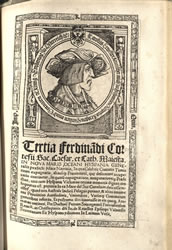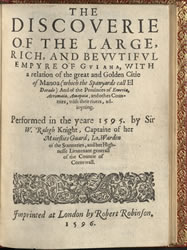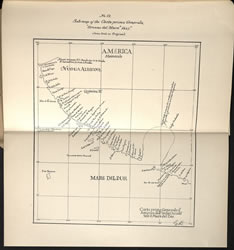
The English came late to imperial expansion because the Pope imparted the Western side of the Atlantic to the Spanish and Portuguese (in Brazil). When Elizabeth I ascended to the English throne in 1558 as a decidedly Protestant monarch, many sea captains no longer felt beholden to Papal decrees. Later known as the great “seadogs,” men like Sir Walter Raleigh, Sir Francis Drake, and Sir John Hawkins gained fame and fortune plundering the Spanish. The Spanish considered all of these men “corsarios,” while in England their legal status was much more complicated and variable. Since primarily private individuals rather than state navies fought maritime warfare, there was a fine line between justified acts of reprisal and outright piracy. That line was even more blurred among radical Protestants who considered all attacks upon Catholic shipping acceptable by God.
Soon after Columbus’s “discovery” of the New World, Spanish conquistadors brutally plundered the riches of the Americas while proclaiming sovereignty over the empires of the Aztec and Incas. This 1524 book reprinted letters from Hernán Cortés describing his invasion of New Spain (Mexico) and the overthrow of Montezuma’s Aztec Empire. The Spanish crown attempted to keep as much information about the Western side of the Atlantic to themselves hoping to keep European sea marauders away.
The great author and courtier Sir Walter Raleigh became obsessed with the legend of El Dorado, an imaginary lost golden empire of the Incas. His failed searches inspired accusations of piracy in England that eventually led to his execution. He was alleged to have responded to these allegations by simply asking “Did you ever know of any that were pirates for millions? They that only work for small things are pirates.”
The most successful Elizabethan seadog was Sir Francis Drake who was the first Englishman to circle the globe while plundering the Spanish Empire. Because Queen Elizabeth could not openly sanction this violence, there were few printed depictions of his adventures during Drake’s lifetime. However, the crown did profit greatly from his adventures; thus, when she had Drake knighted, she allegedly asked the Ambassador of France to hold the sword. Drake’s legend inspired many English captains to become outright pirates during the seventeenth century.
While Drake circled the globe plundering the Spanish Empire, he landed somewhere in California, naming the land “Nova Albion.” Historians still debate his northernmost stopping point, generally considered somewhere near Point Reyes, north of San Francisco. In this 1647 reproduction of a Spanish map, one can see the “Del Drago C Inglese,” noting the landing spot of the English Dragon (Drake’s Spanish nickname).






